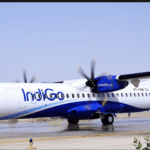MOIL Explores India’s mining industry is set to undergo significant changes as one of its key players, MOIL Limited (formerly Manganese Ore India Limited), embarks on a new phase of growth through overseas mine acquisitions. MOIL, which is India’s largest producer of manganese ore, MOIL Explores is now looking beyond the country’s borders to secure access to critical raw materials like manganese and other essential ores. This move comes in response to the growing demand for these resources in the steel, battery, and renewable energy sectors, both in India and globally.
The strategy of acquiring foreign mines is part of MOIL’s broader vision to diversify its portfolio, enhance raw material security, and ensure long-term sustainability. In this article, MOIL Explores we will delve into the significance of manganese ore, the current status of MOIL in the mining industry, the rationale behind its overseas acquisition strategy, and the challenges and opportunities it faces in this endeavor.
The Importance of Manganese Ore: A Critical Resource
Manganese is a critical component in the production of steel, serving as an essential alloying agent that improves hardness, strength, and wear resistance. In fact, more than 90% of the world’s manganese consumption is attributed to steel production. Beyond steel, manganese is also crucial in the manufacturing of batteries, particularly lithium-ion batteries used in electric vehicles (EVs) and renewable energy storage systems. As the world transitions towards cleaner energy and sustainable transportation, the demand for manganese is expected to rise significantly.
India is the fifth-largest producer of manganese ore in the world, with MOIL contributing nearly 50% of the country’s total production. However, India’s manganese reserves are limited, and with the growing demand for steel and EV batteries, MOIL Explores domestic resources may not be sufficient to meet future needs. This has driven MOIL’s decision to explore overseas mining opportunities as a strategic step towards ensuring a consistent supply of manganese ore.
MOIL: A Key Player in India’s Mining Landscape
MOIL, a government-owned enterprise, has played a pivotal role in India’s mining industry since its inception. Headquartered in Nagpur, Maharashtra, MOIL Explores the company operates ten mines in the state and in Madhya Pradesh. Over the years, MOIL has developed expertise in mining and processing manganese ore, and it has contributed significantly to India’s economic development by supplying manganese to the country’s steel and industrial sectors.
In recent years, MOIL has expanded its operations, investing in modern mining technology and improving production capacity. However, MOIL Explores as India’s demand for manganese ore continues to grow, MOIL has recognized the need to secure additional resources to maintain its leadership in the industry. This is where the strategy of acquiring overseas mines comes into play.  For the more information click on this link
For the more information click on this link
Why Overseas Mine Acquisitions?
- Securing Long-Term Raw Material Supply: One of the primary reasons behind MOIL’s decision to explore overseas acquisitions is to secure a steady supply of manganese and other critical ores. Domestic reserves of manganese are finite, MOIL Explores and with increasing demand, there is a growing need to access new resources. Acquiring mines in resource-rich countries will provide MOIL with a reliable and sustainable source of raw materials, reducing dependency on domestic reserves and ensuring that the company can meet both current and future demand.
- Diversification of Portfolio: MOIL’s overseas acquisition strategy is not limited to manganese alone. The company is also exploring opportunities to acquire mines for other critical minerals, such as copper, cobalt, and nickel, which are essential for a wide range of industries, including electronics, renewable energy, and electric vehicles. Diversifying its portfolio beyond manganese will allow MOIL to mitigate risks associated with reliance on a single resource and open up new avenues for growth in emerging markets MOIL Explores.
- Capitalizing on Global Demand for Manganese and Other Ores: The global demand for manganese, cobalt, nickel, and other critical minerals is expected to rise in the coming years, driven by the rapid growth of the renewable energy and electric vehicle sectors. By acquiring overseas mines, MOIL can position itself as a key supplier of these valuable resources to global markets, particularly as countries around the world transition towards green energy solutions and carbon-neutral goals. This presents a significant growth opportunity for MOIL, allowing it to expand its market presence beyond India and become a global player in the mining industry MOIL Explores.
- Overcoming Domestic Challenges: Mining in India comes with its own set of challenges, including regulatory hurdles, environmental concerns, and land acquisition issues. By exploring overseas opportunities, MOIL can bypass some of these domestic challenges and access regions where mining regulations may be more favorable, allowing for faster project execution and lower operational costs. This could enhance MOIL’s overall competitiveness in the global market.
Target Regions for Overseas Acquisitions
MOIL’s strategy for overseas mine acquisitions is focused on regions that are rich in manganese and other critical ores. Africa, Latin America, and Southeast Asia have emerged as key areas of interest due to their abundant natural resources and growing mining sectors. Several African countries, such as South Africa, Gabon, and Ghana, are known for their significant manganese reserves, making them attractive targets for MOIL’s expansion plans.
- Africa: Africa is home to some of the world’s largest deposits of manganese, with countries like South Africa and Gabon being leading producers. South Africa alone accounts for around 30% of global manganese production. MOIL is likely to focus its attention on this region due to its proximity to India and established mining infrastructure. Additionally, African countries are increasingly open to foreign investment in their mining sectors, which could make the acquisition process smoother for MOIL.
- Latin America: Latin America, particularly Brazil, is another region with significant manganese reserves. Brazil is the second-largest producer of manganese in the world, and its mining industry is well-developed. MOIL may explore potential partnerships or acquisitions in this region to tap into its rich mineral resources.
- Southeast Asia: Southeast Asia, particularly countries like Indonesia and Malaysia, offers opportunities for MOIL to diversify its portfolio by acquiring mines for other critical minerals such as nickel and cobalt. These minerals are crucial for the battery and electronics industries, MOIL Explores and securing access to them would position MOIL as a key player in the global supply chain for electric vehicles and renewable energy technologies.
Challenges in Overseas Acquisitions
While overseas mine acquisitions present significant growth opportunities for MOIL, they are not without challenges. Some of the key hurdles the company may face include:
- Political and Regulatory Risks: Mining in foreign countries often involves navigating complex political and regulatory landscapes. Changes in government policies, mining regulations, or tax regimes can have a significant impact on the profitability and feasibility of mining projects. MOIL will need to carefully assess the political and regulatory risks in target regions and develop strategies to mitigate them.
- Cultural and Operational Differences: Operating in foreign countries requires an understanding of local cultures, business practices, and labor laws. MOIL will need to adapt to these differences and build strong relationships with local stakeholders to ensure the smooth execution of its mining projects. This may involve hiring local expertise and forming partnerships with established mining companies in the region MOIL Explores.
- Environmental and Social Concerns: Mining activities often face opposition from local communities and environmental groups due to concerns about land degradation, water pollution, and displacement of indigenous populations. MOIL will need to adopt sustainable mining practices and engage with local communities to address these concerns and ensure that its projects are socially and environmentally responsible MOIL Explores.
- Logistics and Infrastructure: Mining operations require extensive logistics and infrastructure support, including transportation, power supply, and water resources. In some regions, particularly in remote areas of Africa and Latin America, infrastructure may be underdeveloped, posing challenges for mining operations. MOIL will need to invest in infrastructure development or partner with local governments to overcome these logistical challenges MOIL Explores.
Financing Overseas Acquisitions
Acquiring overseas mines requires significant financial investment, and MOIL will need to explore various financing options to fund its expansion plans. Some of the potential sources of funding include:
- Internal Resources: MOIL has a strong financial position, with healthy cash reserves and a steady revenue stream from its existing operations. The company may use its internal resources to finance smaller acquisitions or initial exploration activities in target regions MOIL Explores.
- Government Support: As a public sector enterprise, MOIL may receive financial support from the Indian government to fund its overseas acquisitions. The government has been actively encouraging Indian companies to invest in foreign resources to secure raw material supply for the country’s growing industries. MOIL could benefit from government-backed loans, grants, or tax incentives to support its overseas expansion.
 For the more information click on this link
For the more information click on this link - Partnerships and Joint Ventures: MOIL may also explore partnerships or joint ventures with foreign mining companies to share the financial burden of acquiring and developing overseas mines. Such collaborations could provide MOIL with access to local expertise and resources, reducing the risks associated with entering new markets.
- International Financing Institutions: MOIL could tap into international financing institutions, such as the World Bank or the International Finance Corporation (IFC), which provide funding for mining projects in developing countries. These institutions often offer favorable loan terms and technical assistance to support sustainable mining practices.
The Road Ahead: Opportunities for Growth
MOIL’s decision to explore overseas mine acquisitions marks a significant shift in its growth strategy and opens up new opportunities for the company to expand its presence in the global mining industry. By securing access to critical raw materials like manganese, cobalt, and nickel, MOIL can strengthen its position as a leading supplier of essential ores for steel production, battery manufacturing, and renewable energy technologies.
As global demand for these resources continues to rise, MOIL’s overseas acquisitions could provide a competitive advantage, enabling the company to meet the growing needs of India’s industrial sectors while also tapping into international markets. However, the success of this strategy will depend on MOIL’s ability to navigate the challenges of operating in foreign markets, MOIL Explores secure financing for its acquisitions, and adopt sustainable mining practices MOIL Explores.
In conclusion, MOIL’s exploration of overseas mine acquisitions represents a bold and strategic move towards securing long-term raw material supply and diversifying its portfolio. With the right investments, partnerships, and risk mitigation strategies, MOIL has the potential to become a global leader in the mining industry, driving growth and sustainability for years to come. ALSO READ:- Centre Mulls Financing Options for Greening Steel Sector: A Pathway to Sustainable Industrial Growth 2024





